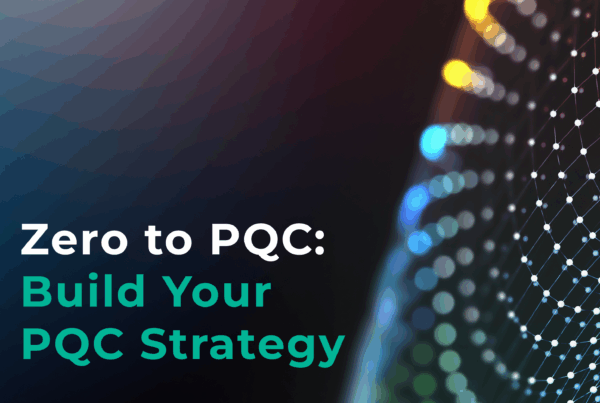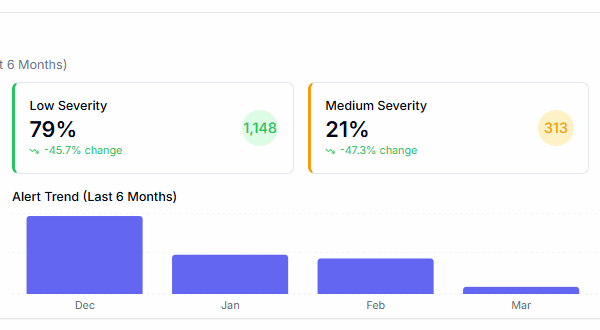
The Post-Quantum Journey: Migration to Post-Quantum Cryptography
Quantum computing holds great promise but also presents significant risks to current cryptographic systems. Organizations relying on traditional encryption methods face the critical task of transitioning to quantum-safe cryptography. This journey, known as Migration to Post-Quantum Cryptography, requires careful planning, resource allocation, and adherence to best practices. Below is a step-by-step guide to navigating this transformative process.
Step 1: Identify (Inventory)
What It Entails:
- Discovery: Locate all instances of cryptographic algorithms, certificates, and libraries in your network, code, and databases. Focus on identifying cryptographic assets across five key pillars:
- External Networks: Assess encryption used in communications with external entities.
- Internal Networks: Map internal data flows and encryption mechanisms.
- IT Assets: Inventory cryptographic tools and configurations on hardware and software systems.
- Databases: Analyze encryption methods securing stored data.
- Code: Examine application codebases for embedded cryptographic implementations.
- Understand Your Encryption Surface: Gain a holistic view of where encryption is used and how it is deployed across your organization.
- Data Discovery: Identify and classify sensitive data that is protected by cryptographic methods.
- Quantified Data Risk: Evaluate the risk associated with each dataset to understand potential vulnerabilities.
- Cryptographic Inventorying: Maintain a detailed inventory of cryptographic assets, their usage, and their compliance status.
- Cryptography Bill of Materials (CBOM): Use the inventory process to create a CBOM, which serves as a comprehensive record of cryptographic assets for analysis and decision-making.
- Categorization: Classify cryptographic assets based on sensitivity and importance.
- Audit: Ensure compliance with regulations like PCI DSS, HIPAA, or GDPR while identifying vulnerabilities.
Why It Matters:
A comprehensive inventory is essential for identifying weak points and planning a targeted quantum-safe strategy.
Step 2: Assess (Roadmap)
What It Entails:
- Impact Analysis: Understand how quantum-safe algorithms will affect your systems, workflows, and performance.
- Algorithm Evaluation: Research and test post-quantum cryptographic algorithms, such as those recommended by NIST, to identify the best fit for your organization.
- Establish a Roadmap: Develop a clear and actionable strategy for transitioning to post-quantum cryptography, ensuring alignment with organizational goals.
- Scope Your Supply Chain & Vendors: Identify and assess dependencies on third-party vendors and supply chains that may also need quantum-safe updates.
- Prioritize Risks: Rank identified vulnerabilities based on their potential impact and the likelihood of exploitation, ensuring the most critical areas are addressed first.
- Test New Standards: Pilot and validate the performance of post-quantum cryptographic algorithms to ensure readiness for full-scale deployment.
- Utilize CBOM Data: Leverage the Cryptography Bill of Materials (CBOM) to assess current vulnerabilities and inform the roadmap for prioritizing updates and mitigations.
- Stakeholder Engagement: Involve key stakeholders, including IT teams, management, and compliance officers, to align goals.
Why It Matters:
A comprehensive assessment ensures an organized, efficient transition that addresses the most critical risks first while preparing the entire ecosystem for quantum resilience.
Step 3: Controls (Policy)
What It Entails:
- Policy Development: Establish clear policies and guidelines for the use of post-quantum cryptographic algorithms. These policies should outline approved cryptographic standards, specify acceptable algorithms, and mandate regular updates to align with industry best practices and evolving threats.
- Access Controls: Define robust access controls to restrict who can interact with cryptographic systems. This includes role-based access, multifactor authentication for key management systems, and logging access to ensure accountability.
- Encryption Key Management: Implement strict controls around encryption key generation, distribution, rotation, and retirement to safeguard sensitive data and prevent unauthorized access.
- Data Protection Controls: Ensure encryption is applied consistently across data in transit, data at rest, and data in use. Policies should enforce the use of strong encryption protocols and mandate encryption for all sensitive data.
- Monitoring and Incident Response: Include guidelines for monitoring cryptographic systems for anomalies and establish clear protocols for responding to potential breaches or failures.
- Compliance Alignment: Ensure that policies align with regulatory requirements such as PCI DSS, GDPR, HIPAA, and emerging quantum-safe standards. This includes maintaining detailed records of compliance efforts and ensuring audits are conducted regularly.
Why It Matters:
Effective cryptographic policies and controls act as foundational guardrails for implementing and managing encryption systems securely. They ensure consistency in how cryptographic solutions are deployed, reduce the likelihood of human error, and build resilience against evolving threats. By establishing clear controls, organizations can protect sensitive data, maintain compliance, and reduce overall risk during the transition to quantum-safe cryptography.
Step 4: Remediate (Execution)
What It Entails:
- Implementation: Execute the roadmap, replacing or upgrading vulnerable cryptographic systems with quantum-safe solutions.
- Integration: Ensure smooth integration of post-quantum algorithms into your existing infrastructure.
- Testing and Validation: Perform rigorous testing to verify the effectiveness and performance of the new systems.
- Begin Transition of Critical Assets: Start the migration process with the most sensitive and mission-critical assets to minimize risks.
- Implement Controls: Deploy robust security measures and policies to safeguard post-quantum systems during and after remediation.
- Execute Crypto Agile Program: Where feasible, implement a crypto agility framework to enable flexible adoption of future cryptographic standards.
Why It Matters:
Proper execution ensures that your organization’s systems are secure, efficient, and ready to withstand quantum threats.
Step 5: Monitor (Verify)
What It Entails:
- Ongoing Monitoring: Continuously monitor cryptographic systems to identify emerging vulnerabilities or inefficiencies.
- Continuous Inventory: Regularly update your cryptographic inventory to capture changes introduced by new code deployments, IoT/OT assets, or other IT infrastructure updates. Legacy cryptography can inadvertently reappear, requiring constant vigilance.
- Validation: Regularly validate the performance and security of quantum-safe solutions against evolving threats.
- Auditing: Conduct periodic audits to ensure compliance with updated standards and policies.
- Never Trust, Always Verify: Adopt a zero-trust approach by continuously evaluating systems and assuming potential vulnerabilities.
- Evaluate Against Remediation Efforts vs Compliance: Compare actual remediation outcomes with compliance requirements to ensure alignment.
- Observe Regulatory Landscape Changes: Stay informed about new regulations and industry standards that may impact cryptographic systems.
Why It Matters:
Continuous monitoring and verification ensure your systems remain resilient in the face of evolving quantum risks and regulatory changes.
Challenges Along the Way
Migrating to post-quantum cryptography presents a series of complex challenges that organizations must address. Cost concerns are a significant hurdle, as upgrading infrastructure and retraining staff can strain budgets. Additionally, the inherent complexity of ensuring compatibility with legacy systems often creates obstacles that require careful planning and execution.
It is vital for organizations to understand their quantum risk and establish a clear risk profile to prioritize their efforts effectively. Having a clear post-quantum cryptography (PQC) strategy is essential to guide the migration process. Engaging the right stakeholders across the organization ensures that all critical areas are covered. Furthermore, developing a robust plan for utilizing cryptographic inventories or a Cryptography Bill of Materials (CBOM) is crucial for successful execution.
While these considerations are fundamental, there are additional factors that, while less critical, are still worth evaluating. For example, organizations should define a realistic timeline for completing a cryptographic inventory. Ensuring access to all relevant assets—such as IoT devices, operational technology (OT), code, firmware, and network segments—is also essential for a thorough migration. Evaluating existing tools and agents to avoid introducing unnecessary new ones can streamline the process and reduce friction. Organizations must also determine the balance between leveraging internal resources and outsourcing to external services, as well as identify which data, devices, and networks require prioritized transitions to quantum-safe systems.
These challenges underscore the importance of collaboration with experts, managed services, and trusted tools to facilitate the transition to post-quantum cryptography smoothly and efficiently.
The Benefits of Starting Now
Starting your migration to post-quantum cryptography today provides a range of significant advantages. Future-proofing your organization against emerging threats is perhaps the most compelling reason to act now. By addressing vulnerabilities early, you reduce the risk of exposure to quantum-enabled attacks and position your systems to withstand future challenges.
Moreover, proactive efforts in this domain help ensure compliance with evolving regulatory requirements, allowing your organization to stay ahead of industry standards and avoid potential penalties. Additionally, a well-planned transition demonstrates to stakeholders, partners, and customers that your organization is forward-thinking and committed to addressing cybersecurity challenges, thereby enhancing trust and credibility.
Conclusion
The journey to post-quantum cryptography is a critical step for organizations aiming to secure their data and systems against future threats. By following these steps—identifying and inventorying cryptographic assets, assessing and planning a roadmap, establishing controls through policies, executing remediation, and monitoring progress—you can build resilience and confidence in your organization’s security posture.






